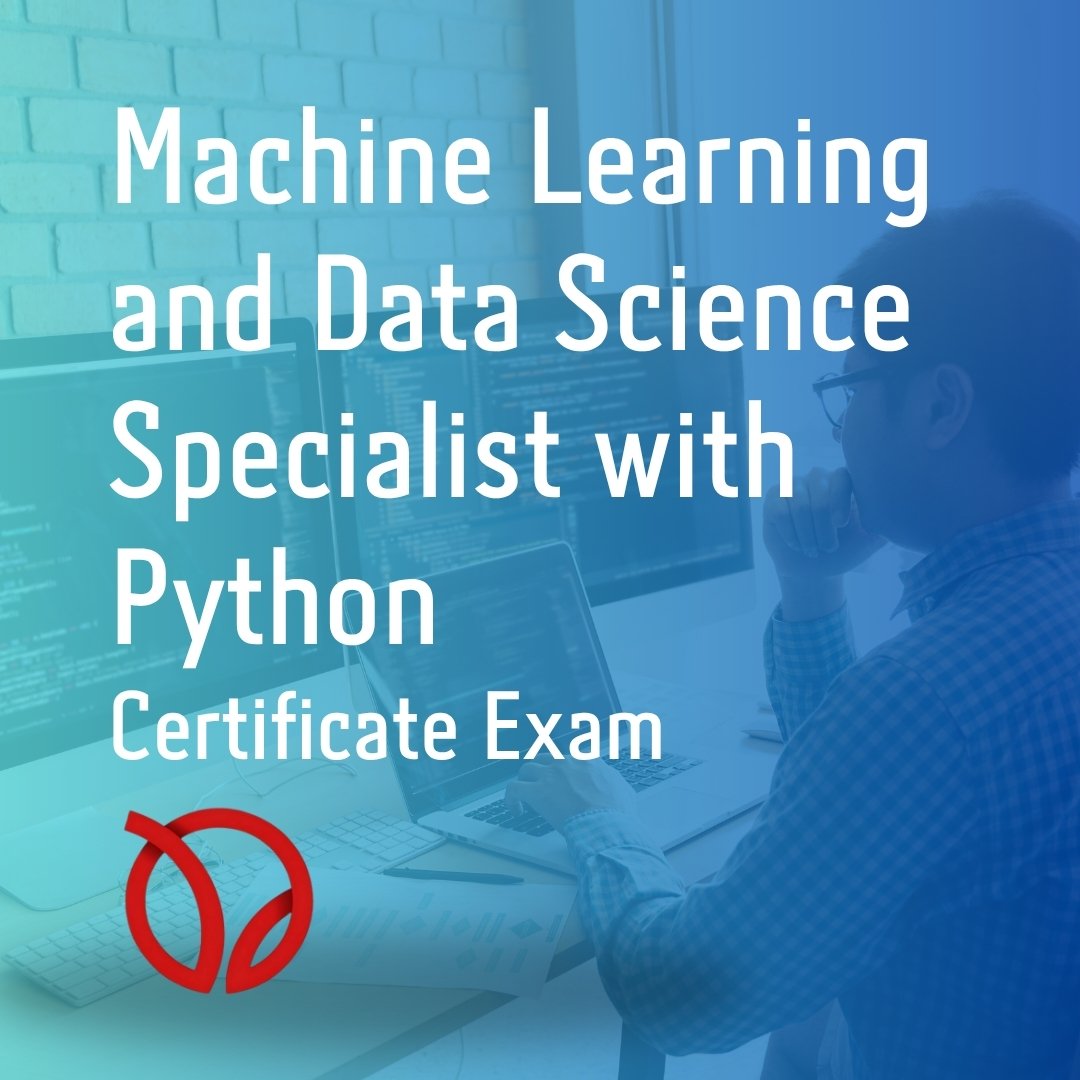Machine Learning and Data Science Specialist with Python

Kurs Hakkında
Machine Learning and Data Science Specialist with Python
Purpose of the Exam & Industry Demand
Wage Premium in the Talent War ≥ 25%
According to PwC’s 2024 Global AI Jobs Barometer and Levels.fyi data, job listings requiring AI/ML expertise offer an average salary premium of 25%.
7% Annual Salary Growth & 74% Job Listing Increase
Between 2024–25, machine learning job postings grew by 74%, while mid-level ML engineer salaries increased by 7% annually.
Corporate Demand
From finance to healthcare, e-commerce to telecommunications, every sector relies on Python-based ML solutions to drive data-informed decision-making.
Machine Learning and Data Science Specialist with Python exam is a globally recognized certification that objectively validates fundamental and intermediate ML/DS knowledge and skills, offering a quantitative proof of competence in your career.
2. Machine Learning and Data Science Specialist with Python Exam Structure
| Feature | Details |
|---|---|
| Number of Questions | 100 multiple-choice (single correct option) |
| Duration | 100 minutes (≈ 1 min/question) |
| Passing Score | 70% |
| Content Source | Real-world Python-based scenarios & industry case studies |
| Delivery Mode | Online proctored session; instant results |
| Verification | Blockchain-signed digital badge + QR validation |
| Retake Policy | 2 free retakes within 12 months |
3. Assessed Competency Areas
(Each row reflects an example inspired by real CSV-derived questions.)
| Competency | Example Question Stem |
|---|---|
| NumPy & Array Operations | “How do you create a 5×3 zero matrix in NumPy?” |
| Pandas Data Preparation | “What is the most common method to filter a table by row/column axis?” |
| Data Visualization (Matplotlib / Seaborn) | “Which library, built on Matplotlib, focuses on statistical graphics?” |
| ML Fundamentals | “If a model memorizes training data and performs poorly on unseen data, what is this called?” |
| Model Evaluation & Metrics | “What is the name of the matrix that reports values like True Positive and False Negative?” |
| Preprocessing & Scaling | “What is the term for bringing features to a similar scale?” |
| Ensemble & Model Selection | “Which method reduces error variance by aggregating predictions from decision trees?” |
The questions are designed to target Application–Analysis levels of Bloom’s Taxonomy, with recall-based items eliminated.
The exam demonstrated high reliability with a Cronbach’s alpha of 0.83.
4. Certificate Value Proposition
Global Recognition
OptiWisdom digital badges can be verified with a single click on LinkedIn and GitHub profiles.
Income Potential
Professionals holding the AI/ML badge receive, on average, 12% higher salary offers for identical roles compared to peers. (Source: businessinsider.com)
Project & Tender Advantage
Certified expertise verified through objective assessment adds credibility in corporate proposals.
Lifelong Learning Ecosystem
Successful candidates receive a 25% discount at OptiWisdom Data Academy and access to monthly live code review sessions.
5. Scientific Basis & Design Process
Item Response Theory (IRT) was used to revise low-discrimination questions.
Pilot Study
Only items with item-total correlation coefficients r > 0.35 were retained after testing on a 300-participant sample.
Bias Analysis
Cultural bias was minimized using Differential Item Functioning (DIF) analysis.
Technology Stack
Question scenarios are up-to-date with: Python 3.12, NumPy 2.x, Pandas 3.x, Scikit-learn 1.6 (as of Q2–2025).
Course Content
Machine Learning and Data Science Specialist with Python
-
Machine Learning and Data Science with Python Exam
Student Ratings & Reviews

